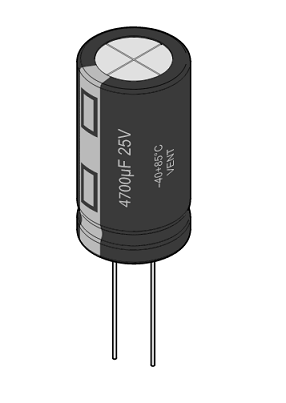Farad

The farad is a unit of capacitance, named after physicist Michael Faraday, used to describe storage of charge in capacitors.[2] The unit for the farad is coulombs per volt (C/V). This describes a case of two oppositely charge plates, each with a coulomb of charge, and a potential difference of one volt between them.
A farad is a large capacitance for most capacitors. Typically electronic applications of capacitors deal with capacitance in the picofarads (10-12 F) to microfarads (10-6 F), however usage of capacitors range all the way up to kilofarads (1000 F). These larger capacitors are often called supercapacitors.[3] Larger capacitors would allow for better energy storage so much research is being done to develop larger capacitors.
For Further Reading
- Capacitor
- Capacitance
- Inductance
- Electric vehicle
- Energy storage
- Or explore a random page
References
- ↑ "Electrolytic Capacitor, Radial, 16x30 (Coloured)" Licensed under Public Domain via Wikimedia Commons - http://commons.wikimedia.org/wiki/File:Electrolytic_Capacitor,_Radial,_16x30_(Coloured).svg#/media/File:Electrolytic_Capacitor,_Radial,_16x30_(Coloured).svg
- ↑ WhatIs.com. (2015, Mar.7). What is a Farad [Online]. Available: http://whatis.techtarget.com/definition/farad-F
- ↑ Battery University. BU-209: Supercapacitor [Online]. Available: http://batteryuniversity.com/learn/article/whats_the_role_of_the_supercapacitor

